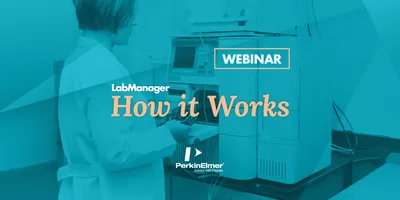Diversity, equity, and inclusion (DEI) are vital aspects of lab leadership and management today. It requires a broad range of knowledge, skills, and experience to solve the hard problems that challenge the life sciences. Building diverse teams and inclusive work environments are critical to attracting, retaining, and inspiring the teams required to solve those challenges.
During the 2022 American Society for Mass Spectrometry (ASMS) annual conference, MOBILion Systems Inc. sponsored a breakfast workshop and panel discussion entitled “Let’s Talk About It—DEI Strategies, Successes, and Challenges.” The panel featured experienced contributors from prominent life science organizations, including Candice Ulmer, supervisory chemistry branch chief from the USDA-FSIS, Farzana Azam, director of innovation from SCIEX, Patrice Jimerson, associate vice president of diversity and inclusion from Agilent Technologies, Rohan Thakur, president from Bruker Daltonics, and Melissa Sherman, chief executive officer from MOBILion. The panel was facilitated by Baljit Ubhi, the vice president of strategic marketing and head of the DEIC at MOBILion. These panelists represent a wide range of experience across both labs and manufacturers, and they shared both personal and professional stories about DEI successes and challenges from their careers and their organizations.
Addressing unconscious bias and group think
One of the underlying issues that drives DEI challenges is the role of unconscious bias and group think in individuals and organizations. Thakur emphasized the need to learn about unconscious bias. We need to better understand ourselves if we want to play a leadership role in improving DEI practices and experiences for others. He emphasized the need to “listen to employees.” Part of that journey is to be open to feedback from staff so that they can show us where some of our biases lay. Jimerson supported this concept with the statement, “First thing is to understand yourself,” and that she listens to people who tell her she is wrong.
How to find resources for DEI efforts
One source of information about DEI activities and actions is the US federal government. Ulmer showed a variety of affinity groups affiliated with US agencies and emphasized the need to involve the people associated with these groups in recruitment, hiring, and retention. She also shared details about the executive order 14035 on DEI and accessibility in the federal workforce that was signed by President Joe Biden on June 25, 2021. The order provides guidance around building strategic plans, defining standards of success, and promoting a data-driven approach to improve DEI success in organizations.
Data-driven DEI strategies
Agilent Technologies is fortunate to have an inspiring and highly experienced advocate for DEI in Jimerson. She provided an overview of the DEI rubric there that focused on attracting, retaining, engaging, developing, and highlighting individuals. She emphasized that, “Representation is only one piece of the puzzle.” What is required is a “culture that embraces all dimensions of identity,” and “leaders that embrace inclusion.” Data is very important to understanding the progress an organization is making toward creating the desired culture. By developing effective DEI survey questions and DEI metrics, these data can be queried to get a better understanding of life on the ground in the organization. Too often, organizations are satisfied with broad aggregate responses to survey questions. However, to get to the local employee experience requires the data to be parsed by different demographics. For example, a specific response that appears to look positive when including all female responses may look different when parsed by African American or other female groups. Agilent Technologies learned a lot about the employee experience of African American women by looking specifically at their survey results.
Lab Management Certificate
The Lab Management certificate is more than training—it’s a professional advantage.
Gain critical skills and IACET-approved CEUs that make a measurable difference.
Azam emphasized the value of employee action groups and friends. While many organizations have developed a wide variety of affinity groups to enable greater belonging for many different dimensions of identity, the addition of friends at SCIEX is important. She shared that at SCIEX, “We define a friend as one who actively supports and defends the rights, interests, and wellbeing of another person or group.” Friends can be vital to build a strong and safe environment for all.
In addition, Azam shared information about a video produced by SCIEX called “Extraordinary Grace,” which examines the questions of a young girl named Grace as she explores the possibilities of a career in science. The video does a great job of calling out important questions for the science community to address to create the working environment we need for a fully inclusive workforce.
Open, continuous communication is key
Sherman closed the presentations with a look at her organization’s approach to DEI with an explanation of the three key vectors: industry, team, and community, and how DEI activities are important to the health of the organization. Sherman reached back to Thakur’s opening and reminded attendees to, “Look again at unconscious bias,” and emphasized the need to “work hard, play hard, and have fun” while working together to address these challenging issues and ultimately have a positive impact among our peers and within our communities. Sherman closed her comments with a reminder that it is important for organizations, large and small, to share experiences and work together to improve DEI across the life science industry.
The panel took a number of questions, which they handled well and with compassion. The question session was a great example of acceptance and active listening demonstrated by people who live this way every day. One of the most interesting conversations sparked by a couple of questions was around the accommodations for lab staff challenged by neurodiversity. Jimerson emphasized the need to get rid of the golden rule (treat people the way we wish to be treated) because others may not want to be treated that way. Instead, move forward to the platinum rule (treat people the way they wish to be treated). She also reminded us that it requires productive conversation to determine how others wish to be treated. As these courageous conversations occur, accommodations can be determined. She closed the conversation with the advice to find the courage to disclose your discomforts and tell your story. It’s the only way for them to be known, considered, and acted upon.
DEI is an ongoing need for most organizations. Even with executive leadership and grass roots level affinity groups, a significant amount of this work is done at the middle management level by lab managers. Look for ways to increase your knowledge and experience in this area.













